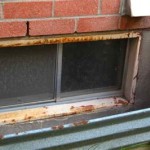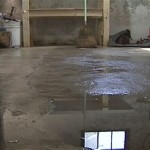Water Sealing Paint For Basement Walls
Water sealing paint for basement walls is a great way to protect your basement from water damage. It is a thick, rubbery coating that forms a waterproof barrier on the walls. This prevents water from seeping into the basement and causing damage to the walls, flooring, and belongings.
Water sealing paint is available in a variety of colors and finishes. It can be applied to both interior and exterior walls. It is important to choose a paint that is specifically designed for waterproofing. These paints typically contain a high percentage of solids, which helps to create a thick, durable barrier.
Before applying water sealing paint, it is important to prepare the walls. This includes cleaning the walls, removing any loose paint or debris, and repairing any cracks or holes. Once the walls are clean and dry, you can apply the water sealing paint.
Water sealing paint can be applied with a brush, roller, or sprayer. It is important to apply the paint evenly and in a thick coat. Allow the paint to dry completely before using the basement.
Water sealing paint is a great way to protect your basement from water damage. It is a cost-effective and easy-to-apply solution that can help to keep your basement dry and safe.
Benefits of Water Sealing Paint
There are many benefits to using water sealing paint for basement walls. These include:
- Prevents water damage: Water sealing paint forms a waterproof barrier on the walls, which prevents water from seeping into the basement and causing damage.
- Protects against mold and mildew: Water sealing paint helps to prevent mold and mildew from growing on the walls. This is important because mold and mildew can cause health problems and damage the walls.
- Easy to apply: Water sealing paint is easy to apply with a brush, roller, or sprayer. It is important to apply the paint evenly and in a thick coat.
- Cost-effective: Water sealing paint is a cost-effective way to protect your basement from water damage.
How to Apply Water Sealing Paint
Applying water sealing paint is a relatively simple process. Here are the steps involved:
- Clean the walls: The first step is to clean the walls. This includes removing any loose paint or debris, and repairing any cracks or holes.
- Apply a primer: Once the walls are clean, you can apply a primer. This will help to ensure that the water sealing paint adheres properly.
- Apply the water sealing paint: Apply the water sealing paint evenly and in a thick coat. Allow the paint to dry completely before using the basement.
Choosing the Right Water Sealing Paint
There are a few things to consider when choosing a water sealing paint for basement walls. These include:
- The type of wall: The type of wall will determine the type of water sealing paint that you need. For example, if the walls are made of concrete, you will need to use a paint that is specifically designed for concrete.
- The climate: The climate will also affect the type of water sealing paint that you need. If you live in a humid climate, you will need to use a paint that is resistant to mold and mildew.
- The cost: Water sealing paint is available in a variety of price ranges. It is important to choose a paint that fits your budget.
Conclusion
Water sealing paint is a great way to protect your basement from water damage. It is a cost-effective and easy-to-apply solution that can help to keep your basement dry and safe.

The Case Against Waterproof Paints Wall Coatings Why Fail What To Do Instead

Waterproofing Basement Walls Dos And Don Ts To Remember Bob Vila

Waterproofing Basement Walls With Drylok Paint Home Repair Tutor

Waterproofing Basement Walls Dos And Don Ts To Remember Bob Vila

The Case Against Waterproof Paints Wall Coatings Why Fail What To Do Instead

How To Waterproof Basement Walls With Flex Seal Products Youtube

Advances In Spray Applied Basement Coatings Waterproof Magazine

The Case Against Waterproof Paints Wall Coatings Why Fail What To Do Instead

How To Use Basement Waterproofing Paint Liquid Rubber

Waterproof Your Basement
Related Posts







